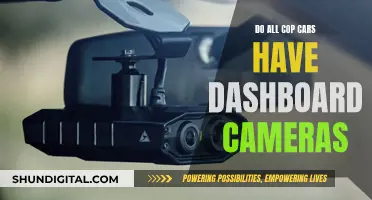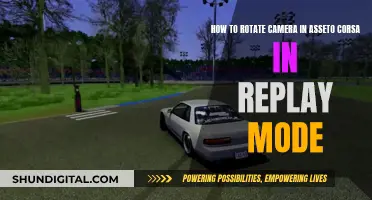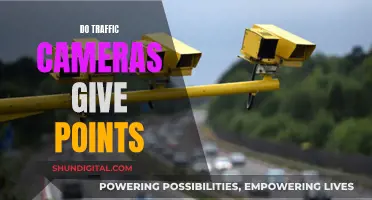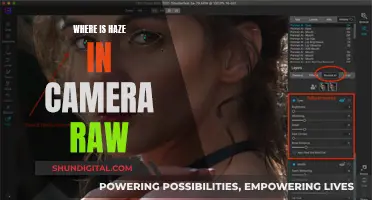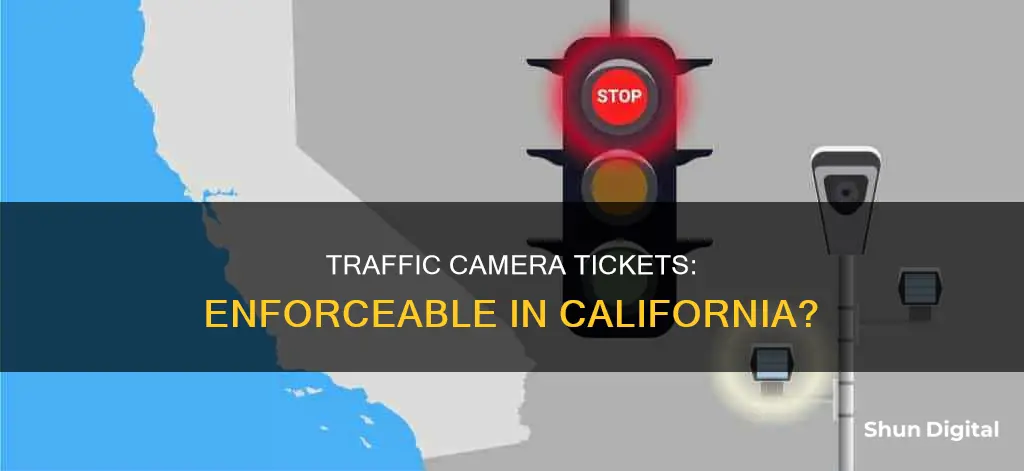
Red-light cameras are legal in California under the California Vehicle Code 21455.5, which covers Offenses Relating to Traffic Devices. These cameras are usually affixed to traffic lights and are equipped with sensors that cause them to start taking photos or videos when they detect movement in an intersection after the light has turned red. The sensors are typically placed on the road, ensuring that the camera captures a clear shot of the car and its license plate.
The law states that the government agency installing the camera is responsible for its maintenance and that photos taken will be kept private but can be reviewed by the recipient of the ticket. While the idea behind these cameras is to improve road safety, many people have criticized their use, calling it an unfair system that bleeds money from unsuspecting motorists.
| Characteristics | Values |
|---|---|
| Are traffic camera tickets enforceable in California? | Yes |
| Who is responsible for the ticket? | The driver |
| What happens if the driver is not the registered owner? | The ticket will be mailed to the registered owner's address |
| What happens if the camera does not capture a clear photo of the driver? | The ticket may be dismissed |
| Can the ticket be ignored? | No |
| How much is a red light ticket in California? | $35-$500 |
| Can you go to traffic school for a red light camera ticket? | Yes |
What You'll Learn

Sensors trigger red-light cameras
Red-light camera systems typically use two induction-loop triggers positioned under the road near the stop line. When a vehicle drives over the induction loop, it disturbs the loop's electromagnetic field, changing the inductance of the loop circuit. This change is detected by a meter in the system, which then triggers the camera.
In some states, a ticket is issued to the owner of the vehicle, regardless of who was driving. In these cases, only the license plate needs to be photographed. In other states, the driver is responsible for the ticket, so a second camera in front of the car is needed to capture a shot of the driver's face.
While red-light cameras are triggered by sensors, there are other mechanisms in place to ensure accuracy and fairness. For example, in Washington state, a commissioned officer reviews and approves the violation before a ticket is issued. Additionally, some states, like Ohio and Georgia, have introduced a statute requiring an additional second to the standard yellow time at intersections with red-light cameras, reducing the number of tickets issued.
The Evolution of First Disposable Camera
You may want to see also

Red-light camera fines
In California, running a stop sign or red light will typically result in a fine and demerit points on your driving record. Many locations throughout California have red-light cameras in place to capture law violators.
The fines a driver has to pay for California traffic violations include a base fine plus a number of fees and surcharges, which can substantially increase the total fine amount. The fees and surcharges are a variable, but you can count on the base fine as the standard starting point.
- $100 for running straight through a solid or flashing red light
- $35 for making an illegal right turn at a red light
- $35 for running a stop sign
How to Fight a Red-Light Camera Ticket
If you receive a red-light camera ticket in California, you can fight it. Here are some steps you can take:
- Check the date and time of the incident and review your schedule.
- Request photographs or videos of the incident.
- Submit an affidavit if you weren't driving and provide the name and address of the person who was driving.
- Time the yellow light interval and compare it to the required time listed in the California Manual on Uniform Traffic Control Devices.
- Ensure warning signs are present and visible at the intersection.
- Visit the police department's website to learn more about the camera and the official timing for the yellow light intervals.
- Request information on the maintenance of the system, as California state law requires automatic enforcement systems to be calibrated and inspected regularly.
- Enter a plea of "not guilty" at arraignment and organise your documents and evidence for the trial.
- Attend your trial and present your case in court, behaving appropriately and treating the judge with respect.
- Request a trial by written declaration if you don't want to go to court.
Other Things to Know About Red-Light Camera Tickets in California
- Red-light camera tickets are triggered by sensors when a vehicle passes above a sensor while the light is red.
- The majority of red-light camera systems in California are installed and run by outside companies, not the city. These companies are often motivated to give out tickets as they are contractually obligated to meet a minimum number of recorded violations.
- Red-light camera tickets can result in points on your driving record, which can lead to a license suspension.
- You may be able to lower, dismiss, or ignore your red-light camera ticket, especially if it was given accidentally, such as when you make a right-hand turn on red without coming to a complete stop first.
- According to California law, a citation can only be issued for a red-light camera violation if there is a clear picture of both the driver and the license plate.
Focusing Your Galaxy S9: Tips and Tricks
You may want to see also

Red-light camera tickets are legal
The introduction of this law has led many California cities to use automated enforcement cameras to monitor red light violations. However, there must be a warning sign posted that is visible from all directions approaching the intersection.
Red-light camera tickets are triggered by sensors that detect a car crossing the line after the light has turned red. The camera then captures two photos—one of the car crossing the intersection during the red light, and another of the car in the middle of the intersection, which serves as evidence that the car entered the intersection purposefully. The second photo also contains the date, time, location, violation number, and car speed.
Upon receiving a red-light camera ticket, the registered owner of the vehicle will be mailed the ticket along with the dollar amount of fines, photo evidence, a copy of the traffic citation, and information on how to challenge the ticket.
While red-light camera tickets are legal, there are several ways to fight them. For example, you can dispute the clarity of the photo evidence, or argue that you ran the red light to prevent further injury or avoid an accident.
Erase Surveillance Footage: A Step-by-Step Guide
You may want to see also

Challenging a ticket
If you receive a red-light camera ticket in California, you can challenge it. Here are some steps and strategies to guide you through the process:
Understanding the Ticket
When you receive the ticket, it is important to review it thoroughly. Look for any inaccuracies or discrepancies in the details, such as the date, time, or location of the alleged violation. Identifying these issues early on can be grounds for dismissal. Additionally, check if the ticket includes clear photo or video evidence of the violation.
Knowing Your Rights
According to California law, a citation for a red-light camera violation requires a clear picture of both the driver and the license plate. If the photo or video evidence is unclear or does not show a definite violation, you may have grounds for challenging the ticket.
Exploring Defenses
There are several potential defenses you can use to challenge the ticket:
- Mistaken Identity or Wrong Vehicle: If the photo or video evidence does not clearly show your vehicle or captures the wrong vehicle, you may dispute the ticket.
- Dubious Offense: If you believe you were making a legal turn on a yellow light or there was a dubious offense, you can contest the ticket.
- Inappropriate Placement of Signs: If the red-light photo sign warning is placed inappropriately or the signs do not clearly state the caution, you may have a case for challenging the ticket.
- False Triggering of the Camera: If you believe the red-light camera was falsely triggered by, for example, the movement of another vehicle, you can dispute the ticket.
- Unauthorized Camera: If the ticket was issued by a camera not authorized by the state, you may be able to challenge its validity.
Gathering Evidence
If you were not the driver at the time of the violation, you can argue that you were not driving the vehicle. However, you will need to provide evidence to support your claim. Additionally, if there are issues with the camera's calibration or obstructions that may have affected the accuracy of the readings, gather evidence to support your case.
Seeking Professional Help
Consulting with a traffic ticket expert or an attorney can be beneficial. They can guide you through the legal process, help you understand your rights, and build a strong defense. They can also assist in organizing and presenting your evidence effectively.
Responding Promptly
It is important to respond to the ticket accurately and promptly. Failure to respond or ignoring the ticket will only result in increased fines and penalties. Take the necessary steps to challenge the ticket within the specified timeframe.
Understanding the Financial Implications
When deciding whether to challenge the ticket, consider the financial aspects. While contesting may involve legal fees, a successful outcome could save you money in fines and potential increases in insurance premiums.
Weighing the Impact on Your Driving Record
Speeding and red-light tickets typically result in points on your driving record, which can affect your insurance rates and lead to license suspension. Evaluate the potential impact on your record and consider if challenging the ticket is worth the effort.
Choosing the Right Spot for Camera Surveillance
You may want to see also

The consequences of running a red light
In California, running a red light can have several consequences. Firstly, you will typically receive a fine, also known as a base fine, which is a set amount for the violation. In the case of running straight through a solid or flashing red light, the base fine is $100. This fine, however, can increase substantially when various fees and surcharges are added, resulting in a much higher total cost.
Secondly, demerit points will be added to your driving record. In California, each stop light or stop sign violation adds one point. Accumulating too many points can lead to serious repercussions, including a license suspension. For instance, if you receive four points in 12 months, six points in 24 months, or eight points in 36 months, your license could be suspended.
Additionally, your insurance rates are likely to increase upon renewal, which may be even more costly than the initial fine. This increase in insurance rates is a significant consequence of running a red light.
In some circumstances, running a red light can lead to more severe outcomes. If you are involved in an accident or cause injury to another person while running a red light, you may be charged with a moving violation or even face criminal charges. In the worst-case scenario, if the violation results in the death of another individual, you could be charged with vehicular manslaughter.
It is important to note that red light camera systems in California are often installed and operated by third-party companies, who may have financial incentives to issue tickets. As a result, there have been criticisms and legal challenges regarding the constitutionality and fairness of these automated enforcement systems.
Cop Camera Battery Life: How Long Does It Last?
You may want to see also
Frequently asked questions
Yes, red-light speeding tickets are considered constitutional in California.
A ticket is mailed to the car's registered owner, along with the citation, the amount of the fines, and photo evidence.
In California, running a red light can cost you in both fines and increases to your insurance rates and can result in points on your license.
Yes, it is possible to fight your traffic ticket and beat the charges against you with a skilled traffic attorney.


